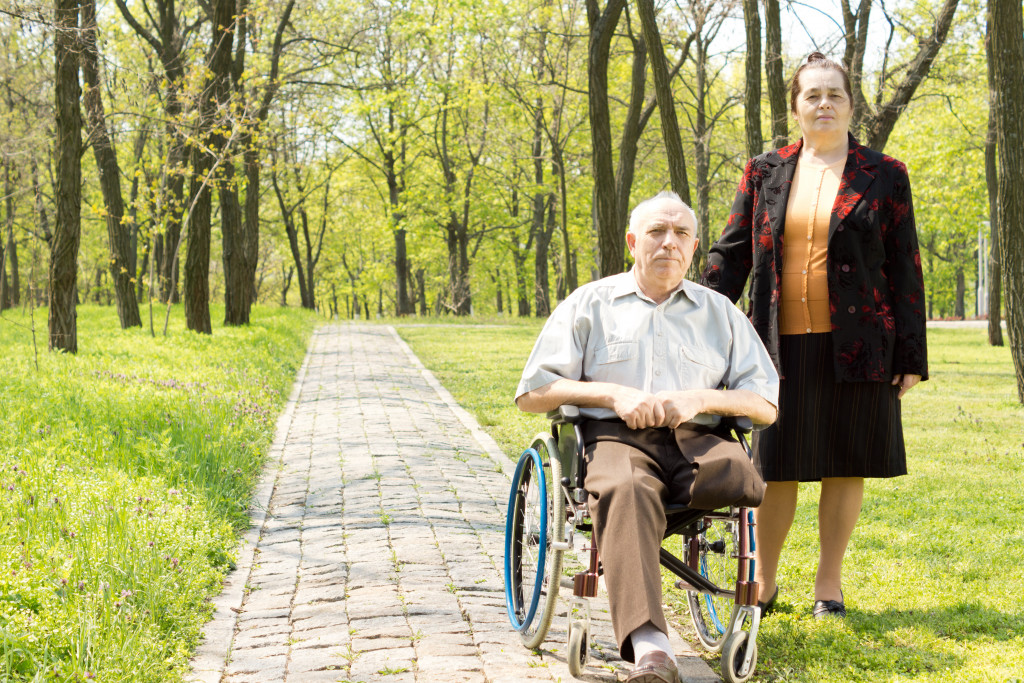- Seek out support from disability service providers and develop a trusting relationship with healthcare professionals.
- Explore adaptive sports and activities such as golf, skiing, cycling, and swimming to stay active despite the amputation.
- Remain focused on the present moment and possibilities for the future.
- Remember that you are more than your disability – you are strong and capable of overcoming any challenge.
Losing a limb is one of the most traumatic events anyone can go through. Not only is it physically disabling, but it can also be emotionally and mentally devastating. But life doesn’t have to end after losing a leg -with the right mindset and resources, you can continue to live an active and fulfilling life. Here are some tips and advice on moving forward and continuing to live your life after losing a leg.
Embrace your new reality
Losing a limb is a life-changing event, and it’s essential to acknowledge and accept this new reality. Allow yourself to grieve and process your feelings about the loss, but don’t dwell on it.
Focus on the present moment and the possibilities that the future holds. Remember that your disability does not define you – you are still the same person you always were, just with different physical abilities.
Seek out support
Losing a limb can be a challenging experience, both physically and emotionally. However, it’s important to know that you are not alone. There are numerous disability service providers out there who can help support you as you navigate a new way of life.
From prosthetic providers to physical therapists, these professionals are dedicated to helping you achieve your goals and live a fulfilling life. Seeking out the right support system can make all the difference, and with the help of these providers, you can overcome any obstacle and continue to thrive.
Find a healthcare team you trust

After losing a leg, you will need ongoing medical care from a team of healthcare professionals. Find doctors and therapists who specialize in working with amputees and who you feel comfortable with. They can help you with rehabilitation, prosthetic fitting, and ongoing care for your residual limb. Building a trusting relationship with your healthcare team is essential for physical and emotional well-being.
Explore adaptive sports and activities
An amputation of a limb can be a life-altering experience. The loss of a limb can be daunting, devastating, and overwhelming. At first, you may feel robbed of your independence and unable to enjoy things you once loved. However, the loss of a limb does not have to be a death sentence. Thanks to modern medicine and advanced technology, adaptive sports and activities have become more accessible and inclusive.
Adaptive Golf
If you love golf but are worried you won’t be able to play after losing your leg, then adaptive golf is for you. Adaptive golf offers a variety of golf equipment modifications, allowing you to enjoy the game like you used to. Some of the equipment designed for adaptive golf includes specially designed golf carts, customized golf clubs, and even prostheses intended for golf.
Adaptive Skiing
Skiing is a sport many people love, but some may think it’s impossible after losing a limb. However, adaptive skiing is a sport that allows individuals to participate in skiing despite their amputation.
Adaptive skiing uses special equipment such as seated ski devices, two-tracking skis, and mono-skis. These adaptations ensure the skier is safe and secure while enjoying the slopes.
Adaptive Cycling
Cycling is an excellent form of therapy and exercise that can promote healing and help individuals regain their confidence after an amputation. There are varieties of adaptive cycles that you can consider using after losing your leg.
These modified bikes for amputees are designed with various features, including specialized pedals, adjustable seat height, and hand cranks suitable for riders with significant leg loss.
Adaptive Swimming
Swimming is a great way to stay active and healthy, and it can be an incredible challenge after an amputation. However, adaptive swimming can help you stay active and enjoy the water without jeopardizing your safety.
Swimmers can use techniques and specialized equipment such as individual limbs’ buoyancy, integrated swim fins, and kickboards for amputees to find a comfortable position in the water.
Losing a leg is a life-altering event, but it doesn’t have to define your life. By embracing your new reality, seeking support, finding a trusted healthcare team, exploring adaptive sports and activities, and not giving up on your goals and dreams, you can continue living a fulfilling and meaningful life. Remember, you are more than your disability – you are a strong and capable person who can overcome any challenge with determination and resilience.





